| |
| |
 |
 |
| |
 |
|
@{mv_date_MMM d, yyyy}@ |
|
| |
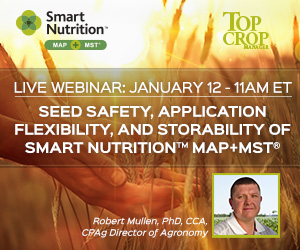 CFA and AAFC announced $3 million of funding for the Hay West 2021 initiative, which will help farmers in Western Canada who are currently suffering from a hay shortage due to the devastating 2021 drought.
» Read more...
CFA and AAFC announced $3 million of funding for the Hay West 2021 initiative, which will help farmers in Western Canada who are currently suffering from a hay shortage due to the devastating 2021 drought.
» Read more...
The multi-year soil health research project will study the longer-term effects of S and N fertilizer management, nutrient cycling and its impact on soil health, forage and grain productivity and quality.
» Read more...
The Top Crop Summit returns virtually on Feb. 16 and 23, 2022. To celebrate the month of December, we’re giving away 40 free passes that will give you access to both the East- and West-centric presentations.
» Read more...
|
| |
 |
 |
| |
|
| |
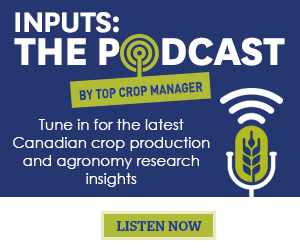
High temperatures and limited soil moisture in precipitation created the perfect storm for many insect pests on the Prairies this year. As MARD’s John Gavloski notes in this episode, grasshoppers and flea beetles were two of the most prominent insects found in the province this year. Beneficial insects were welcomed in many fields this year, but there were some unpleasant surprises as well.
» Listen now |
| |
|
| |
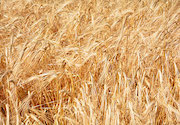 Cereal cyst nematodes are very small, soil-dwelling pests with the potential to cause big impacts on cereal crop yields. These nematodes are gradually spreading in the western United States and could become a concern for Prairie cereal growers. So Shabeg Briar, a research agronomist with Olds College, recently conducted a small survey to collect baseline Alberta data on this emerging issue.
» Learn more...
Cereal cyst nematodes are very small, soil-dwelling pests with the potential to cause big impacts on cereal crop yields. These nematodes are gradually spreading in the western United States and could become a concern for Prairie cereal growers. So Shabeg Briar, a research agronomist with Olds College, recently conducted a small survey to collect baseline Alberta data on this emerging issue.
» Learn more... |
| |
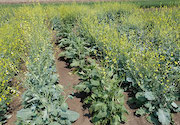 A recently completed project has taken some key steps in an intriguing approach towards fortifying canola’s ability to withstand stress. The idea is to enhance canola’s natural defences by modifying its waxy outer layer. AAFC’s Mark Smith, who led this project, says there is a lot of potential to use genetics and breeding to modify the wax layer, but this concept hasn’t been explored in much detail until recently.
» Learn more...
A recently completed project has taken some key steps in an intriguing approach towards fortifying canola’s ability to withstand stress. The idea is to enhance canola’s natural defences by modifying its waxy outer layer. AAFC’s Mark Smith, who led this project, says there is a lot of potential to use genetics and breeding to modify the wax layer, but this concept hasn’t been explored in much detail until recently.
» Learn more... |
| |
 |
 |
| |
|
| |
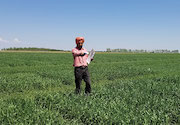 A short dry down period is a valuable advantage for timely harvesting, reducing the risk of weather damage to the grain, and decreasing the need for practices like applying a pre-harvest desiccant or using a grain dryer. Now Jatinder Sangha, research scientist with AAFC-Swift Current, is leading a research project aimed at helping durum wheat breeders develop varieties with faster dry down potential.
» Read more...
A short dry down period is a valuable advantage for timely harvesting, reducing the risk of weather damage to the grain, and decreasing the need for practices like applying a pre-harvest desiccant or using a grain dryer. Now Jatinder Sangha, research scientist with AAFC-Swift Current, is leading a research project aimed at helping durum wheat breeders develop varieties with faster dry down potential.
» Read more... |
|
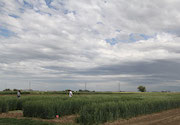 Drought and heat already take their toll on Prairie crop yields. A future where that toll could become much higher is a gut-wrenching thought. NRCC's Gopalan Selvaraj and his research group recently completed a project on the genetic underpinnings of drought- and heat-tolerant traits in durum wheat. Their findings are a step forward in helping durum breeders efficiently move these traits into their breeding lines.
» Read more...
Drought and heat already take their toll on Prairie crop yields. A future where that toll could become much higher is a gut-wrenching thought. NRCC's Gopalan Selvaraj and his research group recently completed a project on the genetic underpinnings of drought- and heat-tolerant traits in durum wheat. Their findings are a step forward in helping durum breeders efficiently move these traits into their breeding lines.
» Read more... |
| |
|
| |
|
|
| |
| |












